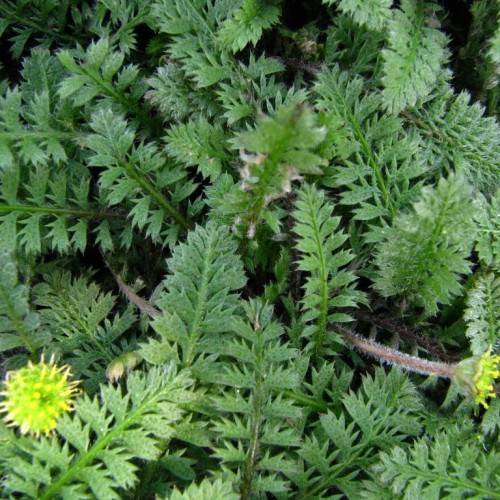
brass buttons
Leptinella squalida 'Platt's Black'
Cycle:
Herbaceous Perennial
Watering:
Average
Hardiness Zone:
4 - 10
Flowers:
Flowers
Sun:
Full sun,part shade
Leaf:
Yes
Growth Rate:
Low
Maintenance:
Low
Drought Tolerant:
Yes
Salt Tolerant:
Yes
Care Level:
Easy
watering
For best results, Brass Buttons (Leptinella squalida 'Platt's Black') should be watered regularly but not excessively. During the hot summer months, aim to give the plants a thorough water once a week. During the cooler months, water only when the soil feels dry to the touch. In drier climates, extra water may be needed to sustain the plant, especially during the summer months. When you water, be sure to saturate the entire root system thoroughly. Over-watering should be avoided, as the plant tends to suffer from soggy soil, causing root rot.
sunlight
Brass buttons (Leptinella squalida 'Platt's Black') require a minimum of 4-5 hours of direct sunlight per day for optimal growth. This species can tolerate partial shade, however the most vibrant foliage and flowers will occur during periods of full sun. When planting, choose a spot in your garden with a good mix of direct sun and partial shade. If the plant receives too much direct sun, especially during the heat of the day, the leaves may become scorched, so try to place the plant in a protected area to avoid leaf burn.
pruning
When it comes to pruning Brass Buttons (Leptinella squalida 'Platt's Black') plants, it is best to do a light pruning just after the flowering period. This will help to keep the plant looking neat and tidy and keep it well maintained. It is best to simply take off any brown or withered foliage, and also cut off any stems that are looking too unruly. This will help to keep the shrub healthy and encourage more growth. If a more hard pruning is required, such as topping, it is best to do this in late winter when the plant is in its dormant state. It is also a good idea to prune away any brown or dead foliage that has been affected by the winter. This way, the plant will have a good chance of recovering and growing new, fresh foliage.
